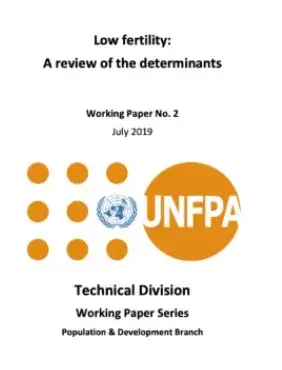Classic demographic transition theory assumed that fertility would decline from high levels and stabilize at the replacement level of around 2.1 children per woman. Yet nearly half of the global population now lives in a country with a period total fertility rate (TFR) below 2.1 children per woman (United Nations, 2019)1. Meanwhile, in many countries in Eastern Asia, Southern Europe, and parts of Central, Eastern and South-eastern Europe, fertility is even lower, with period TFR at 1.0-1.4 and completed family size at 1.4-1.6 births per woman born in the mid-1970s. Traditional development and geographic boundaries have been blurred with all major world regions, except sub-Saharan Africa, now firmly set on a decline towards low fertility. By 2050, more than two-thirds of the global population is projected to live in a country with fertility below a period TFR of 2.1 children per woman2 (United Nations, 2019).
What we do
Low fertility: A review of the determinants

Publisher
UNFPA
Number of pages
54
Author
UNFPA
Publication
Low fertility: A review of the determinants
Publication date
01 July 2019

